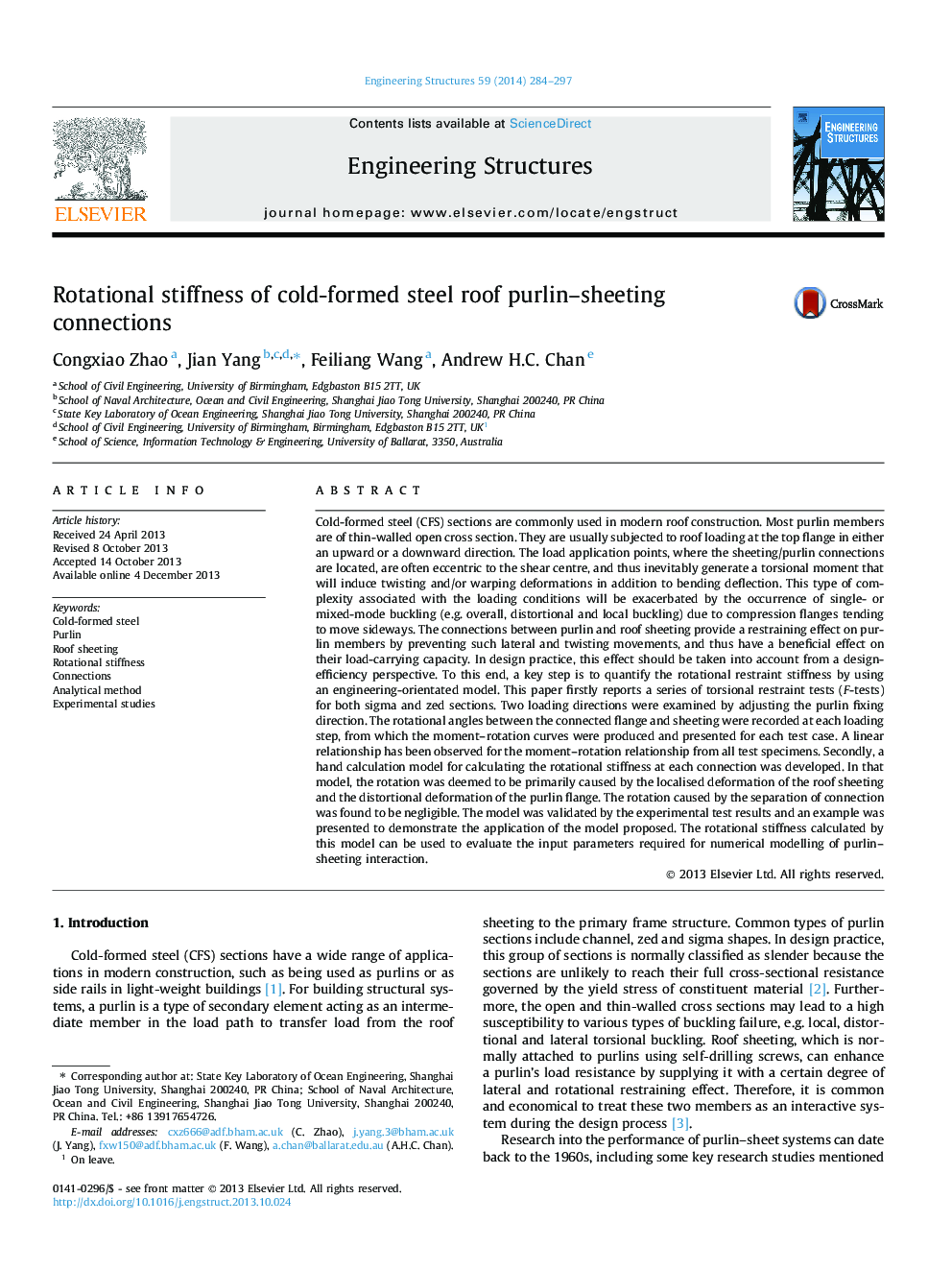| کد مقاله | کد نشریه | سال انتشار | مقاله انگلیسی | نسخه تمام متن |
|---|---|---|---|---|
| 6740857 | 504385 | 2014 | 14 صفحه PDF | دانلود رایگان |
عنوان انگلیسی مقاله ISI
Rotational stiffness of cold-formed steel roof purlin-sheeting connections
ترجمه فارسی عنوان
سختی چرخشی اتصال اتصالات ورق گالوانیزه به فولاد سرد
دانلود مقاله + سفارش ترجمه
دانلود مقاله ISI انگلیسی
رایگان برای ایرانیان
کلمات کلیدی
موضوعات مرتبط
مهندسی و علوم پایه
علوم زمین و سیارات
مهندسی ژئوتکنیک و زمین شناسی مهندسی
چکیده انگلیسی
Cold-formed steel (CFS) sections are commonly used in modern roof construction. Most purlin members are of thin-walled open cross section. They are usually subjected to roof loading at the top flange in either an upward or a downward direction. The load application points, where the sheeting/purlin connections are located, are often eccentric to the shear centre, and thus inevitably generate a torsional moment that will induce twisting and/or warping deformations in addition to bending deflection. This type of complexity associated with the loading conditions will be exacerbated by the occurrence of single- or mixed-mode buckling (e.g. overall, distortional and local buckling) due to compression flanges tending to move sideways. The connections between purlin and roof sheeting provide a restraining effect on purlin members by preventing such lateral and twisting movements, and thus have a beneficial effect on their load-carrying capacity. In design practice, this effect should be taken into account from a design-efficiency perspective. To this end, a key step is to quantify the rotational restraint stiffness by using an engineering-orientated model. This paper firstly reports a series of torsional restraint tests (F-tests) for both sigma and zed sections. Two loading directions were examined by adjusting the purlin fixing direction. The rotational angles between the connected flange and sheeting were recorded at each loading step, from which the moment-rotation curves were produced and presented for each test case. A linear relationship has been observed for the moment-rotation relationship from all test specimens. Secondly, a hand calculation model for calculating the rotational stiffness at each connection was developed. In that model, the rotation was deemed to be primarily caused by the localised deformation of the roof sheeting and the distortional deformation of the purlin flange. The rotation caused by the separation of connection was found to be negligible. The model was validated by the experimental test results and an example was presented to demonstrate the application of the model proposed. The rotational stiffness calculated by this model can be used to evaluate the input parameters required for numerical modelling of purlin-sheeting interaction.
ناشر
Database: Elsevier - ScienceDirect (ساینس دایرکت)
Journal: Engineering Structures - Volume 59, February 2014, Pages 284-297
Journal: Engineering Structures - Volume 59, February 2014, Pages 284-297
نویسندگان
Congxiao Zhao, Jian Yang, Feiliang Wang, Andrew H.C. Chan,
